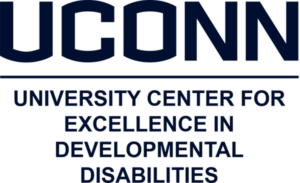13 CES 2025 award-winning assistive tech innovations for healthcare professionals to know about
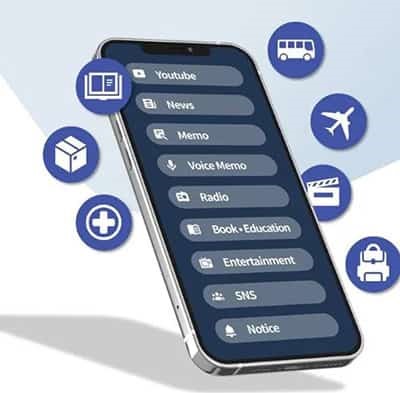
By Sarah Sarsby For AT Today
A realistic prosthetic knee, an accessible system for people with reduced mobility that facilitates seamless makeup application, and a re-imagined computer mouse that can control digital devices using tongue and head gestures have all been commended with a prestigious a CES 2025 Innovation Award.
Organized annually by the Consumer Technology Association, the Consumer Electronics Show (CES) is one of the largest global stages for companies to showcase their latest and greatest technology innovations. The renowned event highlights technologies from a wide range of sectors, including assistive technology, AI, cybersecurity, entertainment, automotive, sports, robotics, and many more.
The CES Innovation Awards is an annual, influential competition honoring outstanding design and engineering in technology products.
There are two levels of honors among the product categories:
- Honoree: The top-scoring products in each category.
- Best of Innovation: The highest-scoring products in the program.
Below, AT Today has highlighted the assistive technology Honorees and Best of Innovation award winners in the ‘Accessibility & AgeTech’ category at the CES 2025 Innovation Awards that healthcare professionals should know about.
- Bio Leg by BionicM
Best of Innovation
The Bio Leg is an innovative robotic prosthetic knee developed to improve mobility for above-knee amputees. By combining an electric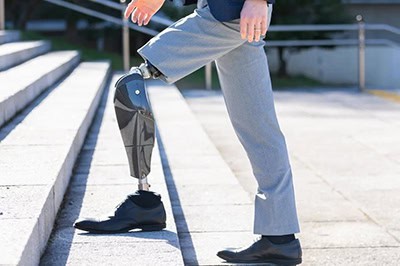 motor with multiple sensors, it offers powered support that alleviates discomfort and improves smoothness of movement. The design emphasizes a natural, lifelike look, incorporating a calf muscle contour and sleek black carbon material for personal expression. What sets Bio Leg apart is its ability to replicate the human knee’s natural movement, providing both strength and flexibility, while turning prosthetics into a symbol of confidence and style.
motor with multiple sensors, it offers powered support that alleviates discomfort and improves smoothness of movement. The design emphasizes a natural, lifelike look, incorporating a calf muscle contour and sleek black carbon material for personal expression. What sets Bio Leg apart is its ability to replicate the human knee’s natural movement, providing both strength and flexibility, while turning prosthetics into a symbol of confidence and style.
- Bling by Braindeck
Honoree
Bling is a wearable solution that enables people with speech disabilities to speak and communicate in their own voices. Bling is a wearable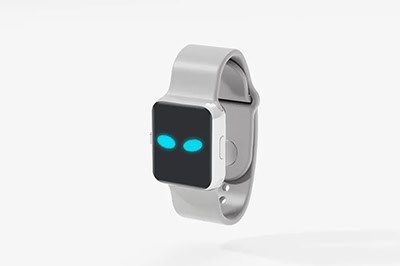 speech converter that uses AI in combination with a high-performance microphone, speaker, and built-in cameras to convert atypical speech and sign language into audible speech in real-time. As well as playing speech through its built-in speaker, Bling displays spoken words on the wearer’s wrist via a built-in projector. Alongside supporting real-time communication, Bling also supports speaking practice by allowing users to listen to speech in their own voice.
speech converter that uses AI in combination with a high-performance microphone, speaker, and built-in cameras to convert atypical speech and sign language into audible speech in real-time. As well as playing speech through its built-in speaker, Bling displays spoken words on the wearer’s wrist via a built-in projector. Alongside supporting real-time communication, Bling also supports speaking practice by allowing users to listen to speech in their own voice.
- EasyPlus by Route Finders
Honoree
EasyPlus is a media platform service developed to improve the usability of smartphones for people with sight loss. Based on AI, it provides  various media services, including news, books, radio, and video, selected according to each user’s interests.
various media services, including news, books, radio, and video, selected according to each user’s interests.
It provides easier access to media content by applying a user-friendly interface optimized for visually impaired individuals and AI that summarizes key information in text after automatically filtering out unnecessary advertisements and pop-ups.
- H-Medi by Hurotics
Honoree
H-Medi is a versatile wearable medical robot designed to address gait disorders, offering a complete and seamless rehabilitation experience. Powered by AI that predicts disease prognosis with 92 percent accuracy, H-Medi analyses individual gait patterns, resulting in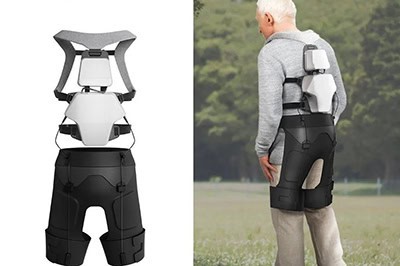 an improvement of over 10 percent in walking speed. Its on-device AI provides tailored support within two minutes, utilizing adaptive algorithms to assess and aid with 95 percent accuracy, boosting gait efficiency by up to 21 percent. This holistic approach ensures precise, personalized rehabilitation.
an improvement of over 10 percent in walking speed. Its on-device AI provides tailored support within two minutes, utilizing adaptive algorithms to assess and aid with 95 percent accuracy, boosting gait efficiency by up to 21 percent. This holistic approach ensures precise, personalized rehabilitation.
- L’Oréal SYNC by L’Oréal
Honoree
L’Oréal SYNC is an innovative assistive beauty system created to empower individuals with upper limb challenges or limited mobility. This  groundbreaking system addresses the difficulties of traditional makeup application, such as opening compacts, twisting lipsticks, and removing caps, by offering a touchless process that makes applying makeup both easy and enjoyable.
groundbreaking system addresses the difficulties of traditional makeup application, such as opening compacts, twisting lipsticks, and removing caps, by offering a touchless process that makes applying makeup both easy and enjoyable.
- Mobile ankle-foot exoneuromusculoskeleton by The Hong Kong Polytechnic University
Honoree
The mobile ankle-foot exoneuromusculoskeleton (ENMS) integrates the multi-modal advantages of exoskeletons, soft pneumatic muscles,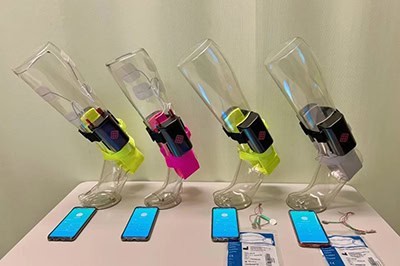 neuromuscular electrical stimulation (NMES), and vibrotactile sensory feedback into a single, lightweight wearable system. This unique combination not only allows for effective correction of post-stroke footdrop and foot inversion, but it also makes the whole system easy to use by users in self-help telerehabilitation.
neuromuscular electrical stimulation (NMES), and vibrotactile sensory feedback into a single, lightweight wearable system. This unique combination not only allows for effective correction of post-stroke footdrop and foot inversion, but it also makes the whole system easy to use by users in self-help telerehabilitation.
- MouthPad^ by Augmental
Honoree
The MouthPad^ reimagines the traditional computer mouse. It enables hands-free control of digital devices — including computers, tablets, 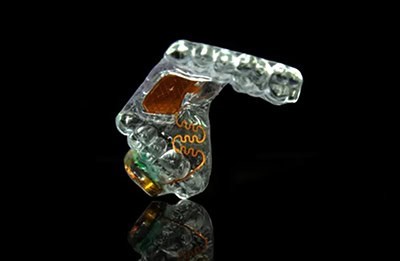 and smartphones — using tongue and head gestures. It offers seamless Bluetooth connectivity and is compatible with all common operating systems as a wireless mouse. Custom-fitted for comfort and made with dental-grade materials, the MouthPad^ aims to enhance accessibility for disabled people and provide intuitive, mouth-based interaction.
and smartphones — using tongue and head gestures. It offers seamless Bluetooth connectivity and is compatible with all common operating systems as a wireless mouse. Custom-fitted for comfort and made with dental-grade materials, the MouthPad^ aims to enhance accessibility for disabled people and provide intuitive, mouth-based interaction.
- Multi-Mic+ by GN Group
Honoree
The Multi-Mic+ is a wireless remote microphone engineered to improve hearing experiences in challenging environments through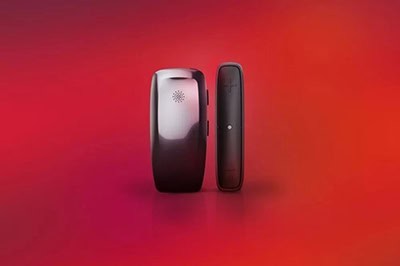 pioneering wireless connectivity. Unlike conventional remote microphones that are restricted to specific hearing aid brands, the Multi-Mic+ can transmit audio to multiple users at once, regardless of their device type. It supports hearing aids, cochlear implants, earbuds, or any other Auracast-enabled device, offering an inclusive solution for a wide range of needs.
pioneering wireless connectivity. Unlike conventional remote microphones that are restricted to specific hearing aid brands, the Multi-Mic+ can transmit audio to multiple users at once, regardless of their device type. It supports hearing aids, cochlear implants, earbuds, or any other Auracast-enabled device, offering an inclusive solution for a wide range of needs.
- My Aura by L’Oréal
Honoree
My Aura is a first-of-its-kind assistive beauty device that dispenses perfume without the need to press a button. Designed with accessibility 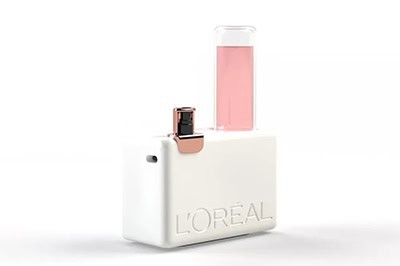 in mind, My Aura enables individuals with upper limb or visual disabilities to enjoy their favorite scents effortlessly. A gentle hover of the hand, wrist, or any preferred body part near the sensor triggers a delicate spray. The device is compatible with any brand of perfume.
in mind, My Aura enables individuals with upper limb or visual disabilities to enjoy their favorite scents effortlessly. A gentle hover of the hand, wrist, or any preferred body part near the sensor triggers a delicate spray. The device is compatible with any brand of perfume.
- Naqi Neural Earbud by Naqi Logix
Honoree
Naqi Neural Earbuds enables users to control computers, devices, IoT, AI, and wheelchairs without voice, touch, or screens. Naqi is aimed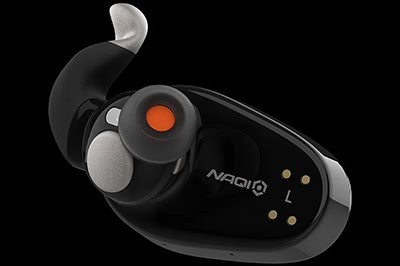 at those who rely on assistive technologies, such as quadriplegics, disabled veterans, and amputees, and as well as for those who want to have a “third hand” to do more by creating a safe, non-invasive alternative to brain implants. When computer and mobile screens are unavailable, Naqi’s invisible user interface provides intuitive control over the user’s connected world.
at those who rely on assistive technologies, such as quadriplegics, disabled veterans, and amputees, and as well as for those who want to have a “third hand” to do more by creating a safe, non-invasive alternative to brain implants. When computer and mobile screens are unavailable, Naqi’s invisible user interface provides intuitive control over the user’s connected world.
- Seekr by Vidi Labs
Honoree
Seekr is a compact AI wearable device created in collaboration with the visually impaired community. Moving away from traditional medical-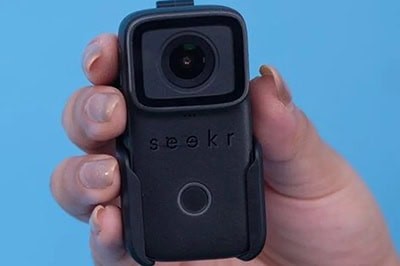 looking and bulky designs, this device features a machine-learning algorithm housed in a camera-equipped clip-on device no larger than a matchbox. It captures visual data and delivers a tailored audio feed of information to users via any Bluetooth-enabled earpiece.
looking and bulky designs, this device features a machine-learning algorithm housed in a camera-equipped clip-on device no larger than a matchbox. It captures visual data and delivers a tailored audio feed of information to users via any Bluetooth-enabled earpiece.
- Voice to Braille by SignTech
Honoree
Voice to Braille instantly converts spoken voice into Braille, allowing people with sight loss who cannot read or write Braille to easily create,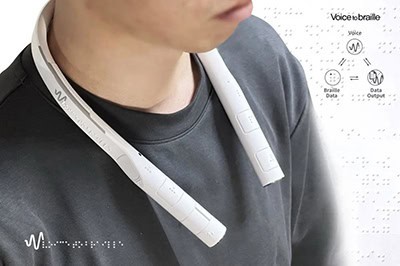 edit, and print Braille text without any additional training. Voice to Braille features a precise microphone system for accurate voice recognition and advanced AI that converts speech into both digital text and Braille data. The Braille data can be freely edited and output as audio through the device’s hyper-directional speaker or transferred to other devices, including Braille printers, enhancing accessibility and seamless communication.
edit, and print Braille text without any additional training. Voice to Braille features a precise microphone system for accurate voice recognition and advanced AI that converts speech into both digital text and Braille data. The Braille data can be freely edited and output as audio through the device’s hyper-directional speaker or transferred to other devices, including Braille printers, enhancing accessibility and seamless communication.
- XanderGlasses Connect by Xander
Honoree
XanderGlasses Connect is wearable assistive technology designed to aid individuals who have difficulty hearing or understanding speech. 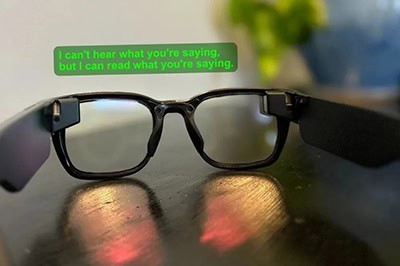 The initial product, XanderGlasses, translates speech into text in real-time, displaying accurate captions for the wearer. The new XanderGlasses Connect enhances functionality with additional features, including AI text transformers to support wearers with cognitive impairments, captioning of environmental sounds (beyond speech), 26 languages, cloud-based translation between languages, and a smartphone app for personalization. XanderGlasses Connect also enables wearers to capture and store conversations, which can be particularly useful for elderly individuals recording medical or legal appointments to share with family.
The initial product, XanderGlasses, translates speech into text in real-time, displaying accurate captions for the wearer. The new XanderGlasses Connect enhances functionality with additional features, including AI text transformers to support wearers with cognitive impairments, captioning of environmental sounds (beyond speech), 26 languages, cloud-based translation between languages, and a smartphone app for personalization. XanderGlasses Connect also enables wearers to capture and store conversations, which can be particularly useful for elderly individuals recording medical or legal appointments to share with family.

